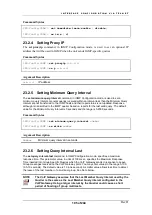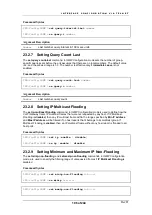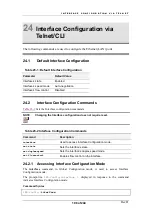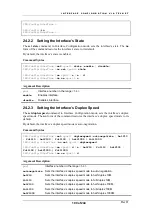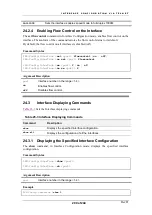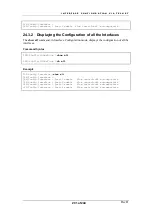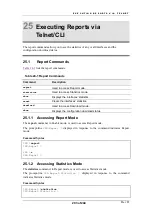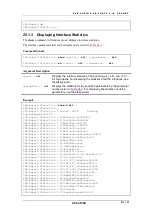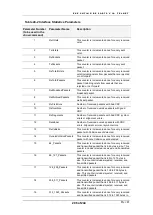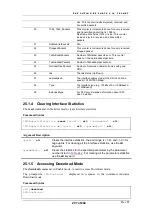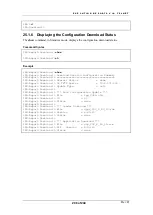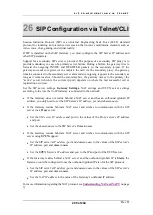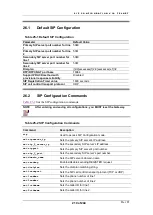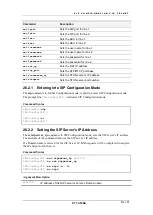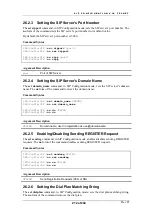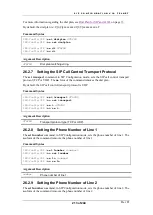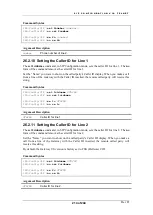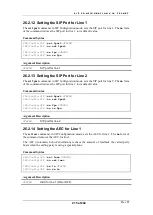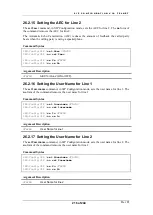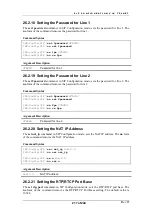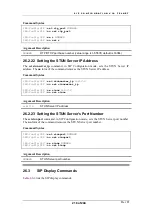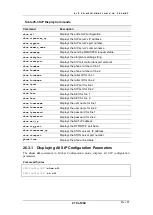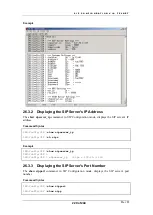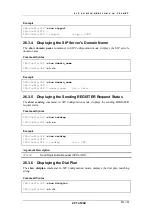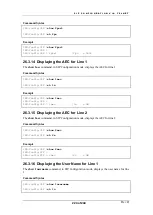
S I P C O N F I G U R A T I O N V I A T E L N E T
Rev H
209 of 244
26
SIP Configuration via Telnet/CLI
Session Initiation Protocol (SIP) is an Internet Engineering Task Force (IETF) standard
protocol for initiating an interactive user session that involves multimedia elements such as
video, voice, chat, gaming, and virtual reality.
If SIP is installed on theVoIP Gateway, you must configure the SIP Server IP address and
other SIP parameters.
Support for a secondary SIP server is provided. The purpose of a secondary SIP proxy is to
provide redundancy in case of a primary server failure. During a failure, the gateway tries to
forward the outgoing INVITE and REGISTER packets to the secondary ip:port. If the
gateway succeeds to register (or to complete the call) via the secondary proxy, the gateway
remains connected to the secondary server and sends its outgoing requests to the secondary as
long as it remains alive. Should the secondary fail, the gateway moves to the primary; the
“active” server (which is the current ip:port) depends on where the last successful call or
registration occurred.
Set the SIP server settings,
Gateway Settings,
NAT settings and STUN server settings
according to the way the VoIP Gateway is connected to the network:
•
If the Gateway does not reside behind a NAT server and has an outbound (global) IP
address, you only need to set the SIP Server’s
IP address
,
port
and
domain name
.
•
If the Gateway resides behind a NAT server and wishes to communicate with the SIP
server via a
Proxy
server:
•
Set the
SIP server IP address
and p
ort
to the values of the Proxy server’s IP address
and port.
•
Set the
domain name
to the SIP Server’s Domain name.
•
If the Gateway resides behind a NAT server and wishes to communicate with the SIP
server using
STUN
support:
•
Set the SIP server’s
IP address,
p
ort
and
domain name
to the values of the SIP server’s
IP address, port and domain name.
•
Set the
STUN
Server’s
IP address
and
port
to the IP and port of the STUN server.
•
If the Gateway resides behind a NAT server and the outbound (global) IP is
Stati,c
the
Gateway could be configured to use the outbound (global) IP also for the SIP protocol.
•
Set the SIP server’s
IP address,
p
ort
and
domain name
to the values of the SIP server’s
IP address, port and domain name.
•
Set the
NAT IP address
to the value of the Gateway’s outbound IP address.
Summary of Contents for AC - 232 - TX
Page 4: ......
Page 24: ......
Page 44: ......
Page 50: ......
Page 68: ......
Page 79: ...C L I C O M M A N D M O D E S Rev H 79 of 244 Figure 9 4 Network Mode show and set Commands ...
Page 81: ...C L I C O M M A N D M O D E S Rev H 81 of 244 Figure 9 8 SIP Mode show and set Commands ...
Page 98: ......
Page 108: ......
Page 156: ......
Page 158: ......
Page 170: ......
Page 184: ......
Page 202: ......
Page 228: ......
Page 234: ......
Page 242: ......

